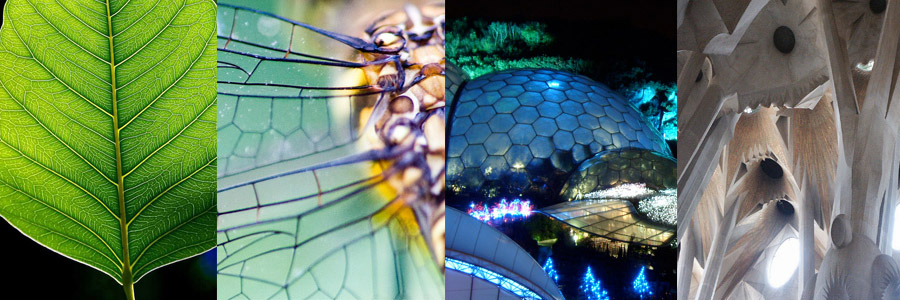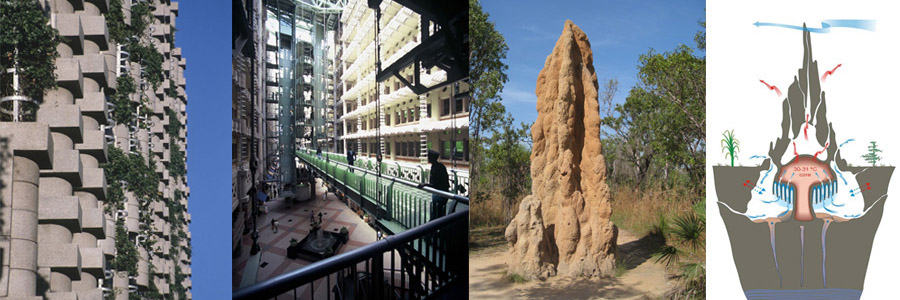Biomimicry: Architecture turns to look towards Nature.
Today, the word sustainability in architecture has become a ubiquitous mantra that is on everyone’s lips and, without doubt, it has arrived here to stay.
Rio 1992, Kyoto 1997 and the launch of the film “An Inconvenient Truth” by Al Gore in 2006 -among others- marked milestones regarding the concern of the society and some political powers regarding climate change and its impact on the planet . These events also contributed to the reappearance of a very important concept: That as living beings, We are part of a universal and interconnected system where our actions -product of our cultural, economic and social context- produce consequences that are often harmful to the planet…
The conduct hitherto prevailing (First thing that comes to my mind is the denial of climate change) and the adverse consequences for our environment are quite the opposite of a ideal system in a state of equilibrium where each party interacts with another in perfect harmony: Nature.
So … Why not imitate it?

Biomimicry is the conscious imitation of nature. Applied to Architecture, consists of taking the design principles of the natural world and then to apply and adapt them to our project and construction process. Through a millions of years of evolution process the Nature offers us a quasi-unlimited range of solutions that are at our absolute disposal. The beauty and efficiency of living organisms and minerals have all the answers to our questions.
In other words, Nature is the best builder and which produces the best results with the least amount of materials. (Eco-Efficiency).
Nowadays, in the fields of architecture and construction We face a great challenge for our planet and for the future generations: Stop and reverse the process of climate change. The Nature shows us the way and gives us all the answers through two main vectors:
First, increasing radically the energy efficiency of buildings and second changing the current traditional linear model construction – with great generation and deposition of waste – for a closed-loop model (Nature does not produce waste, it reuses them as nutrients instead! ).
Now let’s see an example of Biomimicry applied to architecture. Designed by architect Mick Pearce in collaboration with Arup engineers, the Eastgate Centre in Harere, Zimbabwe shows us one of the best architectural cases where they have been applied the principles of biomimicry. The ventilation system and chimneys of an African termite nest were the inspiration for this commercial and office building, which has a natural ventilation and air conditioning system that imitates the termite’s construction concept. The principle of natural convection, using the inertia of materials, employing vegetation on the façade and the cooling during nighttime strategy allow the building to absorb the minimum amount of heat during the day and release it outside overnight. The facade with high thermal inertia is responsible for this work.

In Zimbabwe, the termites build large nests within which they plant and harvest a fungus that is their food. This fungus must be maintained at a constant temperature. By closing and opening the nest perforations along day, natural ventilation occurs through the construction. The air stream enters at the bottom of the nest and then circulates through a series of pipes, achieving this way the cooling of the nest. The air, once heated it’s ejected outward from the top. The Eastgate Centre building uses the same principle. Ventilation costs are only one tenth of what it’s consumed in a building which is air-conditioned by a conventional HVAC system, and all this is achieved keeping the comfort of its occupants.
If We learn from Nature, and do things the way she operates, we can save valuable natural resources such as water and raw materials which used to produce energy and in this manner we could reverse the situation of shortage we face today and that endangers the resources of our next generations.
Learning from Nature, that is the real change.
Julio Bermejo architect.
![]()
